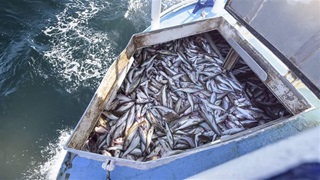FDA Found Listeria in About 1 in 5 Ice Cream Facilities
On World Food Safety Day, a look at how data can improve public health

June 7 marks the first observance of World Food Safety Day, established by the United Nations General Assembly last year to celebrate the benefits of safe food and the efforts needed to produce it. And findings released this spring by the U.S. Food and Drug Administration highlight the critical importance of both prevention-based food safety approaches in manufacturing facilities and the agency’s rigorous oversight.
The FDA’s inspection results reinforced that Listeria monocytogenes—the bacterium that caused a deadly outbreak linked to Blue Bell ice cream in 2015—continues to be a common hazard in facilities making similar products. Inspectors visited 89 ice cream production facilities in 2016 and 2017, taking samples from each establishment’s production environment to test for disease-causing bacteria. They detected Listeria monocytogenes in samples from 19 facilities.
Public health agencies linked ice cream from one of the facilities to three listeriosis infections, which can be especially dangerous to pregnant women, older adults, and people with impaired immune systems. The implicated company initiated a voluntary recall of all its products and ceased making ice cream.
Each year, contaminated food causes about 600 million illnesses worldwide, including an estimated 48 million infections in the United States. These illnesses can be prevented, in part by ensuring that businesses growing and processing food recognize likely contamination hazards in their operations and act to reduce these threats. This requires constant effort and data; many risks are poorly understood and can change as harmful microorganisms evolve and companies alter their practices.
Closing these gaps in our knowledge is one reason FDA routinely inspects food facilities and collects a variety of samples. The agency’s scrutiny of ice cream plants shows how this approach helps improve food safety.
The inspectors reported operational problems at several plants that could endanger consumers’ health. For example, at six of those where Listeria was detected, FDA staff observed conditions or practices likely to contribute to food contamination, such as improper cleaning of utensils and equipment and employees failing to thoroughly wash their hands before starting work or after handling trash. Armed with this information, FDA must ensure through vigilant oversight that facilities correct documented deficiencies in food safety practices.
Just as important, ice cream manufacturers need to make sure that each facility’s food safety plan includes steps to manage Listeria risks—and to confirm that those efforts are working. The 2015 regulation known as the preventive controls rule, issued under the FDA Food Safety Modernization Act (FSMA), requires such efforts.
The rule established that FDA-regulated food facilities have a legally enforceable responsibility to prevent contamination by identifying risks, taking actions to minimize them, and putting procedures in place to monitor hazards and update practices when necessary. And if contamination of a ready-to-eat food such as ice cream is likely, the rule also calls for companies to test the facility environment for pathogens or related bacterial species that can indicate their presence.
Prevention-based approaches to food safety are the best way to reduce foodborne illnesses, and FDA’s rules implementing FSMA are making them the national standard. On this first World Food Safety Day, Americans can be grateful for this progress, as well as FDA’s efforts to ensure that one of the nation’s favorite summer treats won’t make them sick.
Sandra Eskin directs The Pew Charitable Trusts’ work on food safety.













